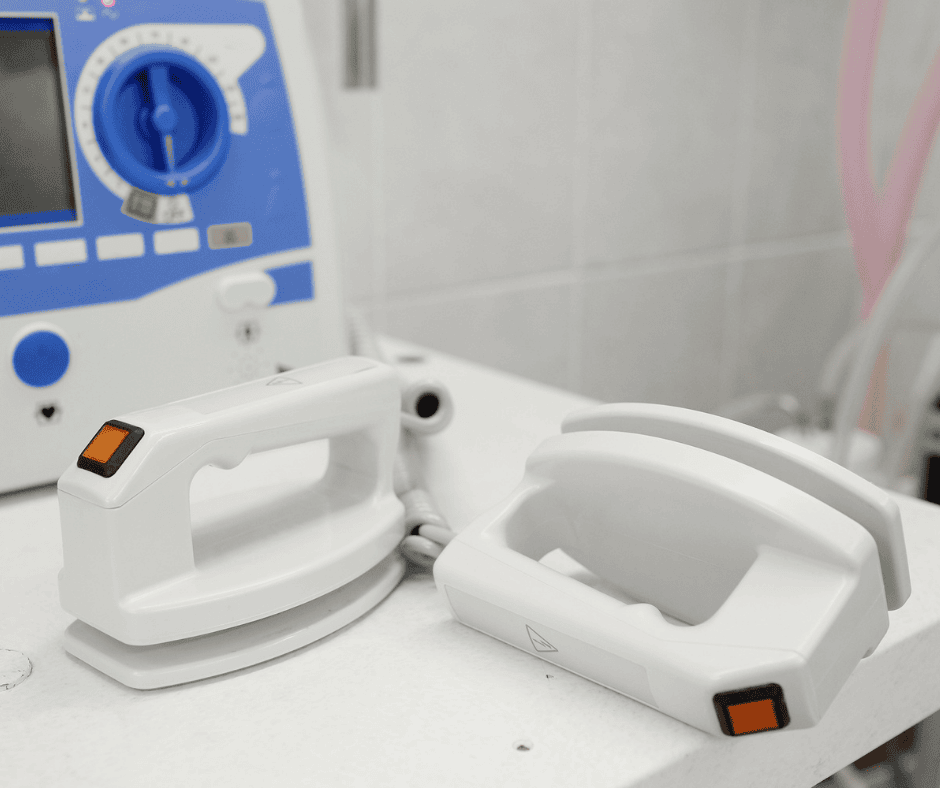Defibrillators are considered a critical tool, not only for medical practitioners, but for anyone attempting to save a life from a cardiac arrest episode. The use of defibrillators is a crucial part of the chain of survival in cases of sudden cardiac arrest. Early defibrillation, along with cardiopulmonary resuscitation (CPR), can significantly increase the chances of survival for someone experiencing this kind of ailment.
This article will discuss the characteristics and applications of various types of defibrillators. Additionally, it will offer guidance on their classification and grouping within the Costa Rican regulatory framework.
Structure and Uses of Defibrillators
Defibrillators are medical devices that use an electric shock to the heart in order to restore normal rhythm in cases of cardiac arrhythmias, particularly ventricular fibrillation (VF) and pulseless ventricular tachycardia (VT). These abnormal heart rhythms can be life-threatening and can lead to sudden cardiac arrest if not treated promptly.
The general design of a defibrillator consists of a control panel, electrodes, and a battery.
- The user interacts with the device via the control panel, that typically includes buttons or a touchscreen interface for turning the device on or off, initiating analysis of the heart rhythm, and displaying essential feedback, such as the analysis results, action prompts, and information of the device’s status.
- If a shock is deemed necessary, the therapy is delivered through the electrodes. The most common type of electrodes are pads attached to the device, that are placed on the patient to deliver the shock. These are adhesive pads with sensors that detect the heart’s electrical activity and transmit it to the device for analysis.
- The battery is the means that provides the necessary electrical energy to the device in order to administer a shock. They can be rechargeable or disposable depending on the model.
Types of Defibrillators
Primarily, there are three types of defibrillators:
- Manual Defibrillators: these are typically used by healthcare professionals such as paramedics, doctors, and nurses. They require training to operate effectively. The user first analyzes the patient’s heart rhythm using electrodes placed on the patient’s chest. If VF or VT is detected, the provider delivers a controlled electric shock through paddles or pads placed on the patient’s chest.
- Automated External Defibrillators (AEDs): these are designed for use by non-medical personnel or laypeople in emergency situations. AEDs are portable and often found in public places such as airports, malls, and schools. They are designed to be user-friendly, with audio and visual prompts to guide the user through the process. AEDs also analyze the patient’s heart rhythm and deliver a shock if necessary.
- Implantable Cardioverter-Defibrillators (ICDs): these are medical devices that surgeons implant in a patient’s body, beneath the collarbone. They are programmed to automatically detect cardiac arrest or arrhythmia, and send a shock to counter them. Some newer ICD models can also act as pacemakers.
Classification and Grouping in Costa Rica
Considered as closed loop systems under the Costa Rican regulatory framework, defibrillators fall under Class 4 medical devices by rule 9.
As explained in our Classification and Grouping Ultimate Guide, if different models of a device meet the following requirements, they can all be approved under the same registration:
- Same intended use.
- Same manufacturer.
- Same device technology (i.e., manual defibrillators and AEDs would need different registrations).
- More than one presentation can be included in the same registration, in which case all the presentations must be indicated in the application.
It is important to note that, accessories deemed as medical devices on their own (such as SpO2 sensors or multifunction electrodes) will have to be recorded on a different sanitary registration.
If you have any inquiries about the registration of defibrillators or any other medical devices in the Costa Rican market, please feel free to contact us at contact@veraqueconsulting.com, or check our guidelines.

